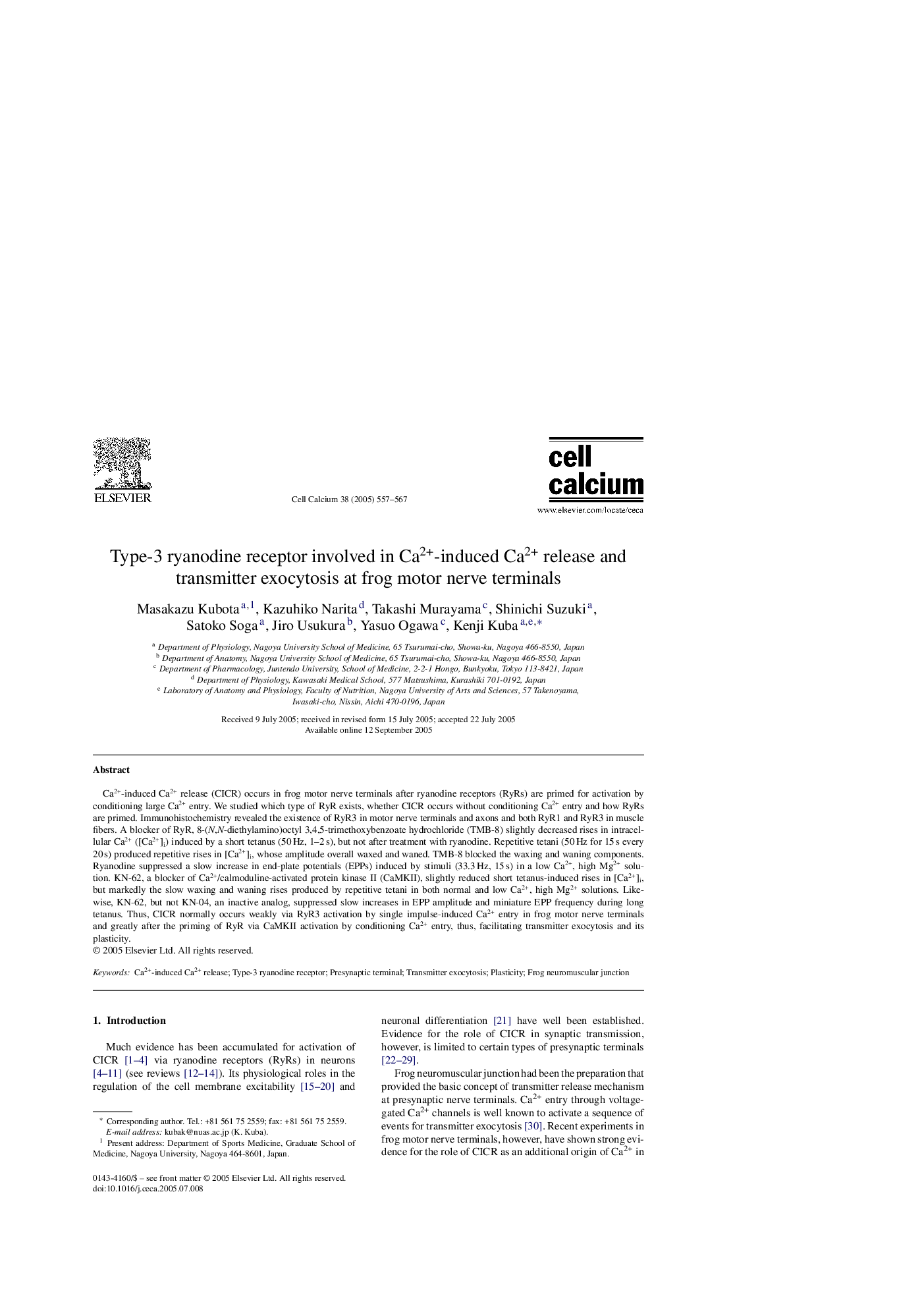| Article ID | Journal | Published Year | Pages | File Type |
|---|---|---|---|---|
| 10926515 | Cell Calcium | 2005 | 11 Pages |
Abstract
Ca2+-induced Ca2+ release (CICR) occurs in frog motor nerve terminals after ryanodine receptors (RyRs) are primed for activation by conditioning large Ca2+ entry. We studied which type of RyR exists, whether CICR occurs without conditioning Ca2+ entry and how RyRs are primed. Immunohistochemistry revealed the existence of RyR3 in motor nerve terminals and axons and both RyR1 and RyR3 in muscle fibers. A blocker of RyR, 8-(N,N-diethylamino)octyl 3,4,5-trimethoxybenzoate hydrochloride (TMB-8) slightly decreased rises in intracellular Ca2+ ([Ca2+]i) induced by a short tetanus (50Â Hz, 1-2Â s), but not after treatment with ryanodine. Repetitive tetani (50Â Hz for 15Â s every 20Â s) produced repetitive rises in [Ca2+]i, whose amplitude overall waxed and waned. TMB-8 blocked the waxing and waning components. Ryanodine suppressed a slow increase in end-plate potentials (EPPs) induced by stimuli (33.3Â Hz, 15Â s) in a low Ca2+, high Mg2+ solution. KN-62, a blocker of Ca2+/calmoduline-activated protein kinase II (CaMKII), slightly reduced short tetanus-induced rises in [Ca2+]i, but markedly the slow waxing and waning rises produced by repetitive tetani in both normal and low Ca2+, high Mg2+ solutions. Likewise, KN-62, but not KN-04, an inactive analog, suppressed slow increases in EPP amplitude and miniature EPP frequency during long tetanus. Thus, CICR normally occurs weakly via RyR3 activation by single impulse-induced Ca2+ entry in frog motor nerve terminals and greatly after the priming of RyR via CaMKII activation by conditioning Ca2+ entry, thus, facilitating transmitter exocytosis and its plasticity.
Related Topics
Life Sciences
Biochemistry, Genetics and Molecular Biology
Cell Biology
Authors
Masakazu Kubota, Kazuhiko Narita, Takashi Murayama, Shinichi Suzuki, Satoko Soga, Jiro Usukura, Yasuo Ogawa, Kenji Kuba,
